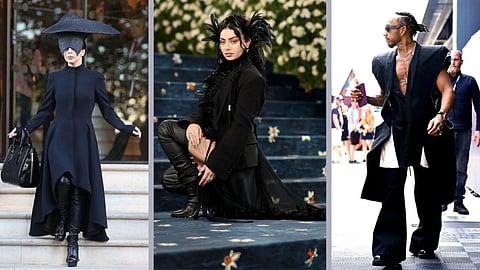
- LIFESTYLE
- FASHION
- FOOD
- ENTERTAINMENT
- EVENTS
- CULTURE
- VIDEOS
- WEB STORIES
- GALLERIES
- GADGETS
- CAR & BIKE
- SOCIETY
- TRAVEL
- NORTH EAST
- INDULGE CONNECT

They say dressing well is the best revenge—but now, it’s not about sweet elegance or quiet luxury anymore. Enter: Villain era fashion, a movement that is ditching dainty pastels and clean-girl minimalism in favour of something darker, sharper, and unapologetically commanding. It’s the kind of wardrobe shift that says “I’m not here to please you, I’m here to own my narrative.” Think Maleficent’s silhouettes, Morticia Addams’ poise, or Rihanna in literally anything post-2016. The aesthetic? Confidence with a side of chaos. The vibe? Dressed to kill, not to impress.
The villain era is more than a social media trope. It’s a cultural recalibration. Women, queer folks, and anyone who’s been told to “smile more” are now leaning into their so-called ‘too much-ness’—too bold, too loud, too fierce. The fashion that comes with it? All edge, no apology. Expect: structured blazers, dramatic monochrome, floor-grazing coats, leather everything, sharp heels, and blood-red lips. It’s ‘revenge dressing’ rebranded: less about an ex, more about rebirth.
Designers are in on it. Rick Owens, Alexander McQueen, and Ann Demeulemeester have long played in this space, but now mainstream fashion is catching up. At recent fashion weeks and events, dark romanticism, armour-inspired details, and oversized tailoring stole the spotlight. Even high-street brands are doubling down— they are dripping in noir power suits, corsetry, and goth-luxe vibes. Online stylists are calling it ‘the Dark Femme Agenda’.
Pop culture is full of it. Villain-esque style icons—from Euphoria’s Maddy Perez to Wednesday’s titular character—are reshaping how young people perceive power. Even celebrity makeovers scream transformation: look no further than Taylor Swift’s shift from cottagecore to Reputation black leather. Or Zendaya in full Mugler robo-suit glory. These are not villains in the traditional sense. They're self-possessed, self-protecting, and fashion-forward. Don’t confuse this aesthetic with being busy or overdone. Villain fashion is calculated. The palette is pared-back: blacks, deep burgundy, metallics. The lines are clean. The accessories? Statement or nothing at all. This is quiet luxury’s moodier, more mysterious cousin.
It’s not about peacocking. It’s about precision and presence.
Coming out of years of instability—pandemic burnout, job precarity, social shifts—many are done performing softness. Villain era dressing is part fashion therapy, part armour. In uncertain times, people are dressing like the most unbothered version of themselves. If revenge dressing was once about showing them what they lost, villain era fashion is about remembering who you are. It’s sleek, it’s sharp, it’s a little scary—and that’s exactly the point.